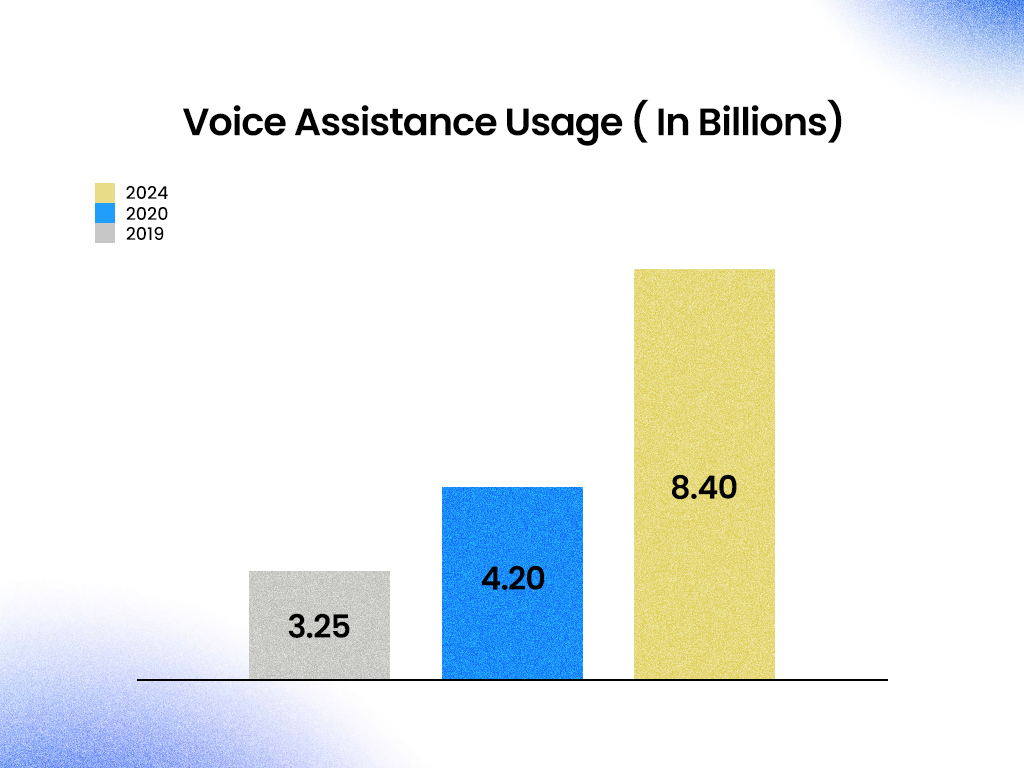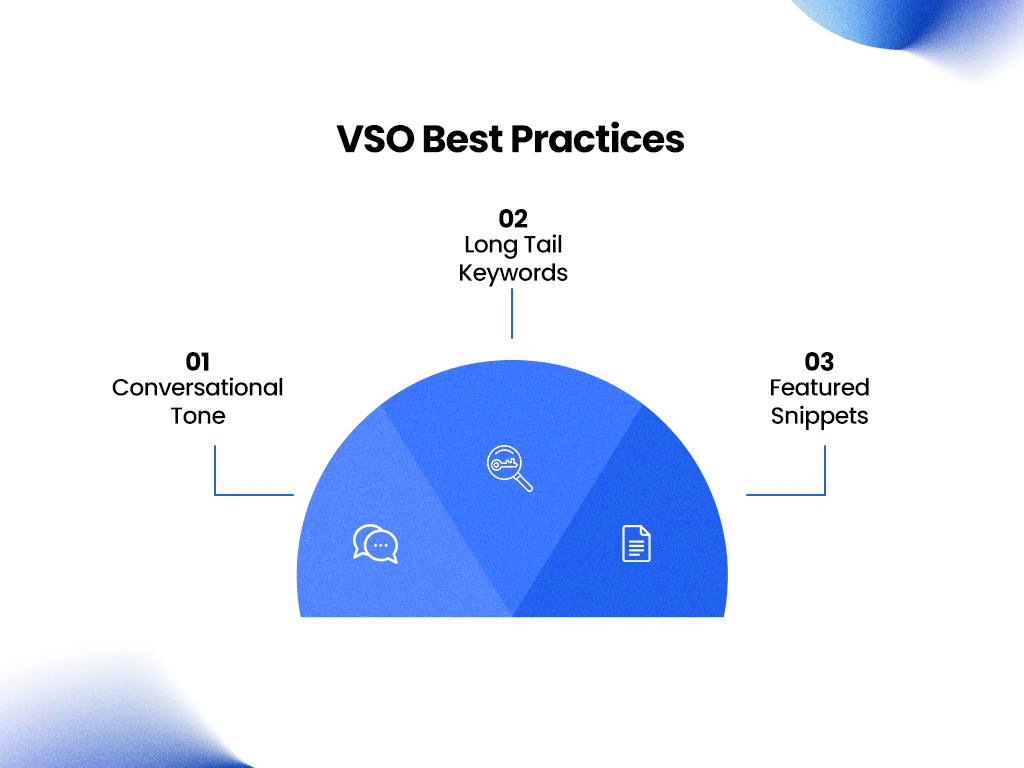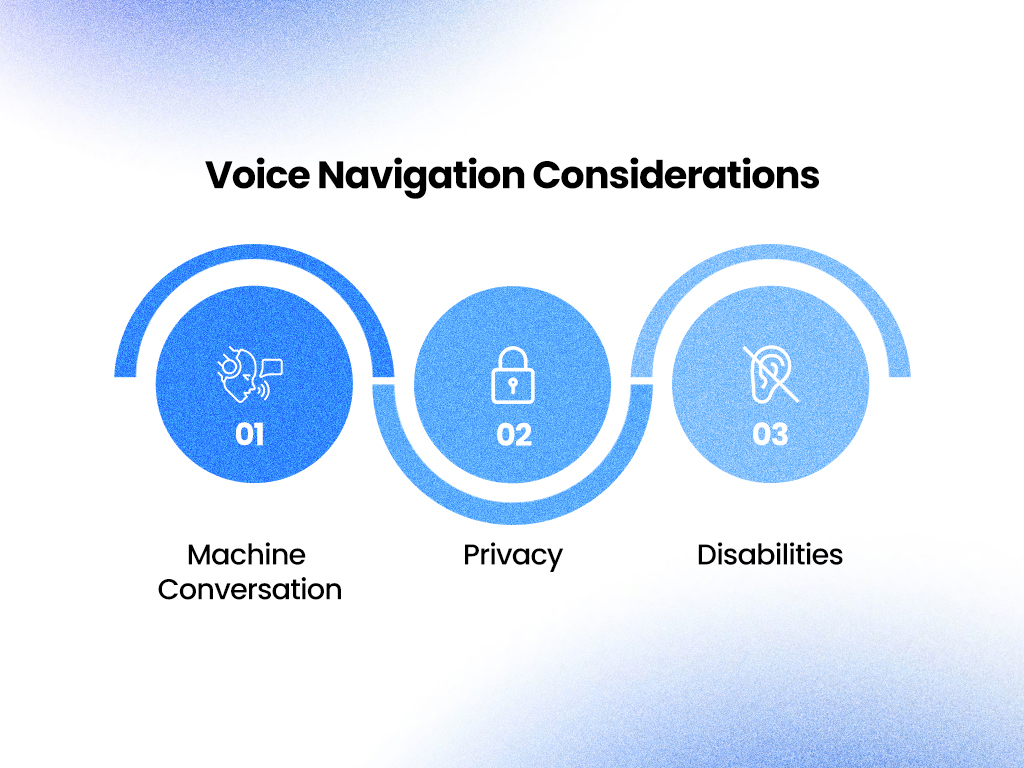What makes a business successful? It’s how easy they make it for their customers to find them. That means you have to pay close attention to users’ search behaviors. One key trend that has been at the forefront of search behavior change is the rise of voice commands.
What are voice commands? Simply, it is a spoken user query instead of a typed one. How to optimize your content for voice commands? Through VSO (Voice Search Optimization, VUI (Voice User Interface), and NLSO (Natural Language Search Optimization). Not familiar with these terms? Don’t worry; we will explore all that in detail.
Before that, let’s discuss the importance of voice commands in today’s web experience.
Why Voice Commands Matter in Modern Web Experiences?
In the web development and design landscape, nothing is permanent. Things that seemed impossible yesterday can become a market staple today. A decade ago, who would have thought that they could sit on their couch and shop using voice commands?
User experience keeps changing, but some ideas always stay the same. These ideas are often considered the ‘gospel truth’. GUI (Graphical User Interface) is one such concept (at least everyone thought so, until VUI took over).
However, if you think GUI was always the norm, you can’t be more wrong. GUI replaced CUI (Character User Interface) a while ago, in the early 1980s. As CUIs were highly complex and hard to understand by the masses, Xerox released the first GUI in the Xerox Star. That changed everything! Graphics replaced text-driven interfaces in CUIs.
Following that, Apple released Macintosh, its first GUI OS, in 1984. What’s more? In 1985, Microsoft released Windows 1.0, which was its GUI. This was how GUIs emerged, and then the rest is history. It became a staple for designers and developers. It redefined the user experience field.
Now, it’s time for VUIs to dominate the market. Don’t believe us? Here are a few statistics on voice commands and voice searches to back up the statement:
- By 2028, the number of smart speakers shipped is expected to exceed 270 million.
- Even in 2022, more than 25% of people in Western countries reported using digital voice assistants several times a day.
- In 2024, the number of voice assistant users in the US stood at 149.8 million users.

Do you remember Miss Minutes from ‘Loki’ or Jarvis from ‘Iron Man’? They seem like something that happens only in sci-fi movies. What if Miss Minutes and Jarvis become real? Can you imagine the possibilities?
Imagine this: You are sitting on the couch and browsing the internet. You come across a website. Instead of reading a screen to find what you need, a friendly voice starts guiding you. Wouldn’t that be amazing?
It would be even more amazing if you didn’t even have to pick up your phone. You command through your voice to browse something and then you tell it to open the most popular website for it.
It’s not wishful thinking anymore. It is real now!
That’s exactly what Voice User Interfaces (VUIs) offer.
But why should you care about it? As a business, your top priority should be to provide the best experience to your customers, right?
VUI doesn’t just give users a good experience; it makes things feel so real and smooth that it leaves a strong first impression on your visitors. This makes them your follower and loyal customer for life.
VSO (Voice Search Optimization): Is your Website Visible?
As a business owner, you are probably familiar with search engine optimization (SEO). It helps you gain visibility on search engine result pages like Google, Yahoo!, or Bing. This helps generate traffic to your website.
However, the search behavior has now changed. Instead of typing in the queries, users nowadays use voice commands instead. Voice shopping has become a trend now. So, optimizing your content for voice searches can be a game-changer for your business. This is why voice search optimization is a key to your website’s visibility.
How does voice shopping or voice search work?
You must have heard of popular voice assistants like Siri or Alexa. They use AI and NLP (Natural Language Processing) to respond to user queries. You talk to these digital assistants, and they listen and give the best answers they can.
What is voice search optimization, or VSO?
It means making your website work well with voice commands or voice searches. SEO is still very important when creating content today. VSO also includes some common SEO best practices like improving page load speed, site indexing, simplifying navigation and creating relevant content aligned with search intent.
What are the VSO Best Practices?
Now that we know what voice search is and how it works, let’s look at some easy ways to make it better.

1. Using a Conversational Tone
Instead of using a keyword-driven strategy, you have to use a conversational tone. For instance, instead of typing “VSO best practices”, a user may ask, “Hey Siri, how do I enhance my website visibility through VSO?” This shift in search behavior can only be addressed if you directly talk to the users through your content. You should use everyday words and keep your content clear and easy to understand, instead of using fancy or technical terms.
2. Using Long-Tail Keywords
Are you familiar with long-tail keywords? If not, don’t worry. These are longer keywords (at least three words) that give more details. Not many people search for them, so they’re easier to rank for.
But why use long tail keywords? Voice commands are not short queries. They are more detailed than traditional user queries. As people speak faster than they type, voice searches are mostly elaborate. You can see that in the previous example. But, just using them randomly won’t help. They should sound natural, like how people talk, and be useful.
3. Making Use of Featured Snippets
Voice assistants like Siri or Alexa depend on featured snippets or AI overviews. What are featured snippets? Google’s featured snippets look like this.

These are short answers that show up at the top of Google before search results. How to secure your spot in the featured snippet section?
- By providing clear and direct answers to common user queries
- Using keyword-rich subheadings and headings
- Providing numbered steps to applicable areas of the content
Another way to do this is by using schema markup. What is it? It is a code that helps search engines understand your content and business clearly. It helps search engines know what your content is about, so they can use it to answer voice searches and display it more often.
What are the Key Considerations when Designing for Voice Commands?
VUI (Voice User Interface) development is on the rise. However, voice searches aren’t a new concept. You may be surprised to learn that back in 2021, more than 30% of all browsing was done by voice commands. What’s more? 1/3rd of all browsing sessions were screenless.
Even in 2023, the VUI market size was 16.5 billion USD. This size is expected to grow by over 20% by 2030. Why is that? This rise is due to the increase in the usage of smart TVs, speakers, smartphones, and other IoT devices. However, VUI development is an interesting thing. You have to consider several factors before development begins.
What are the key things to consider when developing a VUI? Let’s find out!
- Try to provide an interactive user experience with strong user control: This will let users interrupt, correct, confirm, and choose their own paths. It will provide users with a sense of control.
- Make it work like a normal conversation people have in real life:You should design it to sound like how people naturally talk, and make it easy to follow step by step. This will not make the interface robotic, as it often appears in most VUIs.
- Designing the UI to be clear and informative: You have to make sure that the system is simple and informative (even for voice commands).
- Make the conversation easy and quick: Using simple and expected words and steps helps keep users interested. This will make the navigation smooth, providing an exceptional user experience.
- Designing for different audiences: Your UI won’t be visited by adults or older adults only. People from different age groups can also access your website. So, build a UI that caters to all conversation tones and styles, instead of making it usable only for one or two demographics.
Following these can help you make a VUI that stands out from the crowd. This helps your business by making users happy and increasing your site’s exposure on SERPs.
Are Accessibility and Inclusion the Only Perks of Voice Navigation?
Voice navigation is the next big thing in user experiences. They provide accessibility to everyone, which leads to their inclusion.
Let’s be honest, everyone likes solving problems by talking instead of typing a lot to find answers. However, we have to do it wisely.
Other than accessibility and inclusion, we will explore 2 additional perks of it.
- Speed: Thinking and saying is faster than thinking and typing. The moment you think of something, you can say it almost instantaneously. Even the veteran typists cannot type that fast.
- No Training Required: Suppose you ask your grandma about Elvis Presley’s greatest hits. She can answer it instantly. If you go to the internet and browse about the songs, it may take a while. It’s easier to ask someone and get answers than to type and search online. Plus, anyone can do it.
However, nothing is perfect in this imperfect world. Voice navigation is no exception. There are some problems you need to think about when making a VUI system for your business.

- The Strange Feeling of Talking to a Machine: Believe it or not, some people don’t feel like talking to machines. So, try to make the conversation sound natural, not like a robot. A good interaction can change anyone’s mind.
- Privacy: While voice navigation is useful, it can pose a security threat, too. Imagine you’re talking to a system, and it asks for personal information, such as your name or address. Is it safe to say that out loud when you’re in public? No, right? So, don’t require the user to disclose that information in public. Give them an option to fill in this data in well-designed forms.
- Speaking or Hearing Difficulties: For people with these problems, just using voice navigation isn’t enough. Even for trivial tasks, voice navigation will be a nightmare for them. So, try to build a UI in such a way that it caters to these people as well.
The Future is Crisp (And Beautifully So). Are you Ready?
Voice commands or voice search are the new normal. The future belongs to voice navigation, and VUI will play a major role in it. However, the success or failure of your VUI depends on the implementation process.
Don’t just make a voice system without a plan. Follow some smart tips to give users a great experience. To make a great VUI system, keep the tone friendly and make the replies sound like a real person.
So, the future is bright for voice commands and voice navigation. It is and will continue to transform the way we interact with the digital world. They are not an option anymore, but a necessity to give an amazing experience to your users.





